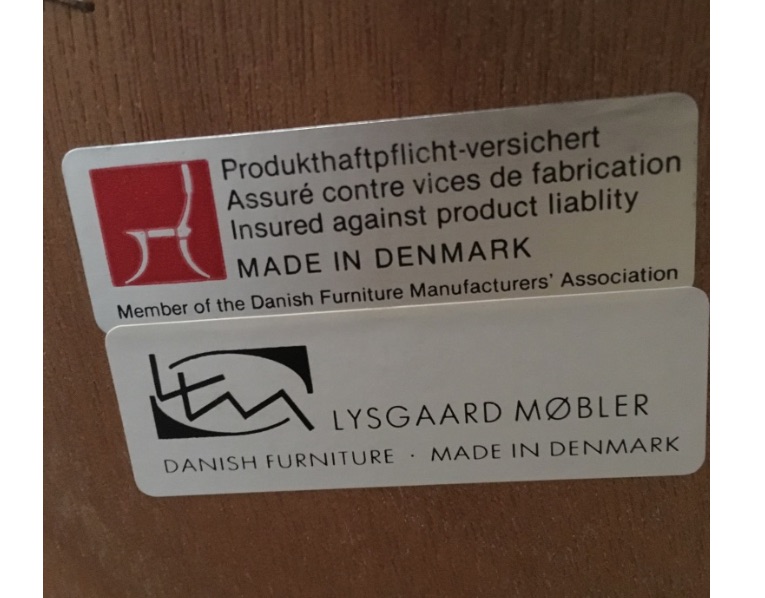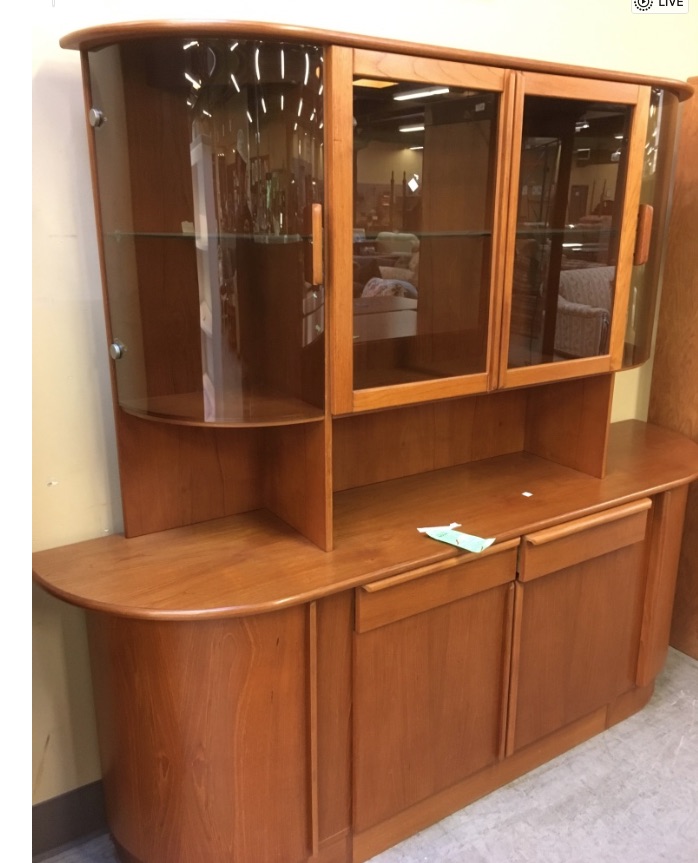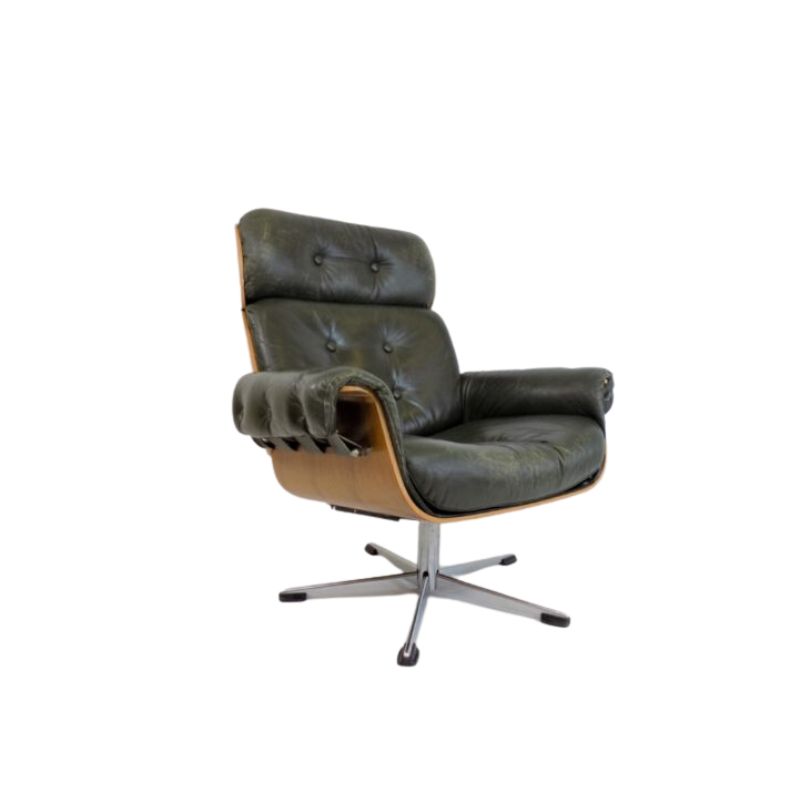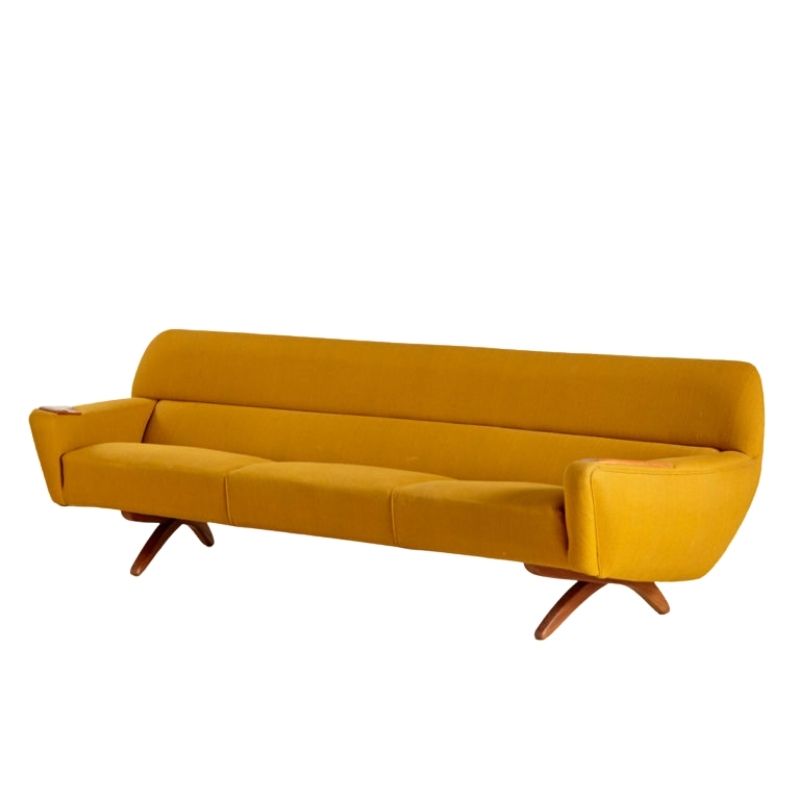Lysgaard is very plausibly a Danish last name. When the Danes were require to take fixed last names a few hundred years ago, many took the name of the family farm, so Lysgaard, would be Light Farm.
The label is later, 80s maybe, not too sure exactly how much later. That should tell you everything you need to know about resale value.
Basic forum rules:
https://www.designaddict.com/node/add/forum
One might argue that they should be more prominently and legibly displayed...
Retail value can vary wildly depending on where you are and whether that one person who happens to love the piece sees it, hasn't researched value, needs it NOW, and has some money to blow on it. At the opposite end of the spectrum, you could consign it to an auction house and only realize $20. Or less.
Danish Modern furniture was very popular from the mid-50s through the 60s, but then like many styles its popularity began to wane. Furniture manufacturers kept using teak but they started to cut corners design-wise, using more plinth bases and standard-looking drawer pulls, dimensional lumber for arms and legs instead of sculpted or even just round, tapered parts, etc. That's what you see showing up in the mid-70s. By the 80s it was out there in force. More and more of it was made in Asia.
Once you start to study the early Danish designs, these differences will jump out at you. I see the later stuff in thrift stores in my area and I always *want* to like it because it's Danish, after all...but it's just not quite as beautiful as the older stuff.
An aside concerning value of teak lumber:
Just last week my lovely MIL asked if I could assemble an inexpensive garden bench she had purchased from a discount online retailer for US$125. The poor-quality corrugated cardboard box clearly marked "Indonesia" did not inspire much in the way of high hopes on my part, needless to say.
Upon opening the box, I must admit that I was pleasantly surprised to find components sturdily constructed of genuine teak. Not first-quality teak, of course, but teak nonetheless with no obvious inherent structural flaws such as knots, short grain, run out, checks, or shakes. I couldn't stop thinking to myself that I couldn't buy half the teak it would take to build the bench from my local hardwood dealer for $125.
Apart from design quality and minor fit and finish issues, the assembled bench, after a little finish sanding and an application of marine-grade teak oil, impressed me as a relative bargain. Not to be compared with Lutyens garden benches that high-end retailers get upwards of $2K for, certainly, but, out along the path, I think it'll be just fine for at least a decade's service with virtually no maintenance.
If you need any help, please contact us at – info@designaddict.com











